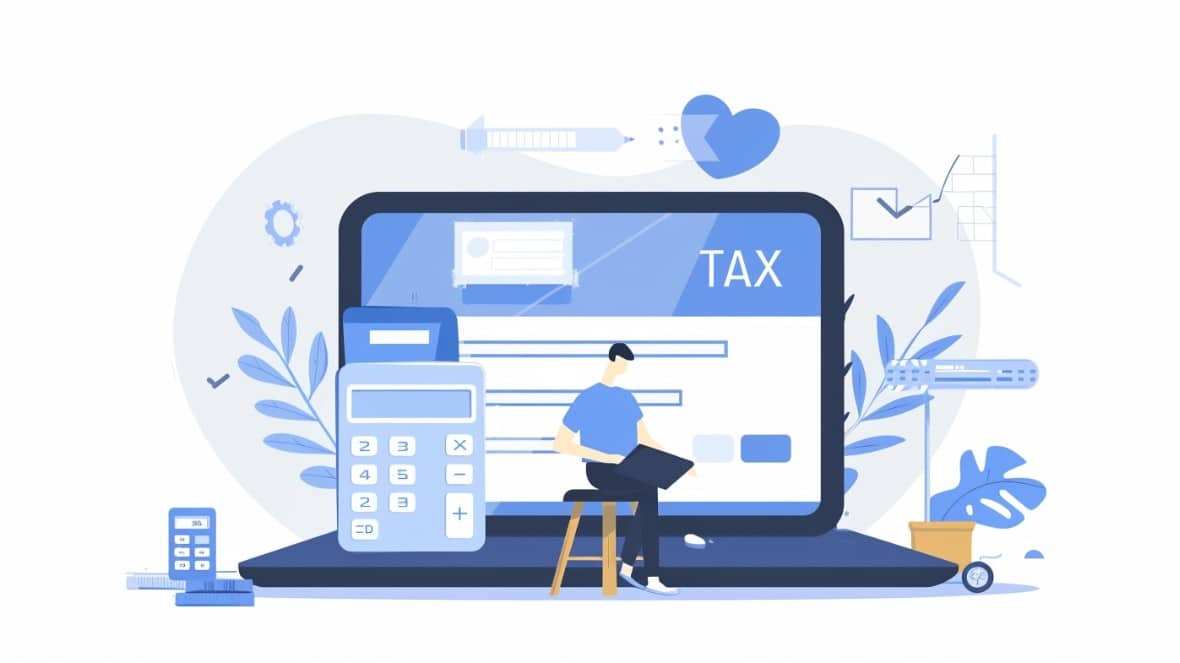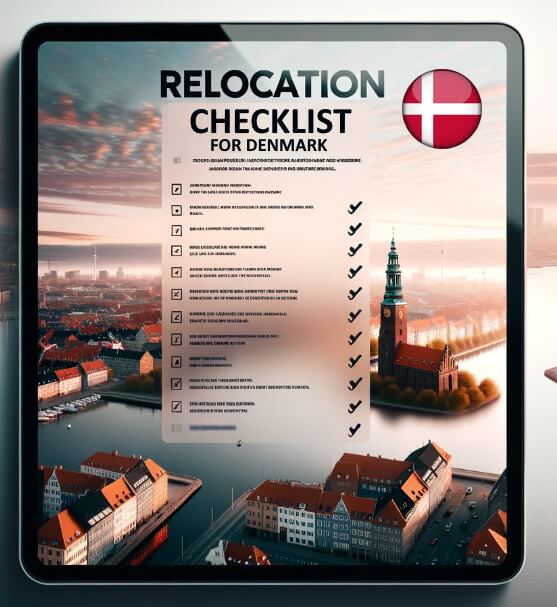Navigating the intricacies of Denmark's fiscal landscape needs understanding and procuring specific identifiers, paramount among which is the Tax Identification Number. This unique identifier is indispensable for residents and foreigners engaging in myriad activities, from employment to banking.
This article delves into the significance, acquisition process, and proper utilization of the Tax Identification Number in Denmark, aiming to equip readers with the vital knowledge required to integrate into the country's financial framework seamlessly.
Key Takeaways
- The Tax Identification Number in Denmark is commonly known as the "CPR number".
- This number is essential for various economic and societal activities within Denmark.
- Both residents and non-residents engaging economically in Denmark require a Tax Identification Number.
- Obtaining the number involves a methodical process, necessitating careful preparation and documentation.
- While the number's applications are vast, safeguarding its integrity is paramount.
- Awareness of common challenges and their solutions ensures a smooth experience with the tax system.
Background on the Danish Tax System
Denmark is often lauded for its comprehensive and well-structured tax system, a cornerstone in underpinning the country's robust welfare state and public services. This system, a confluence of clarity and efficiency, ensures equitable revenue distribution, facilitating amenities like healthcare, education, and infrastructure development that are characteristic of Danish society.
Central to this tax infrastructure is the individual's Tax Identification Number. This number not only streamlines the process of tax collection but also ensures transparency and accountability for every taxpayer, be it a native resident or a foreign national. It functions as an individual's unique identifier within the tax system, linking them to their respective financial obligations and entitlements.
While Denmark's tax rates might appear high compared to some other countries, it's this very structure that guarantees a high standard of living, excellent public services, and a remarkable level of social security. It's imperative, then, for individuals residing in Denmark to understand and align with the intricacies of this system, ensuring timely compliance and availing the benefits that come with it.

What is the Tax Identification Number?
The Tax Identification Number, commonly referred to in Denmark as the "CPR number," stands as a pivotal element within the nation's fiscal framework. This number comprises a unique 10-digit sequence, meticulously assigned to each individual, ensuring that they can be distinctly recognized within the realm of financial and tax-related transactions.

Primarily, the Tax Identification Number serves to distinguish and document individuals in relation to their tax obligations, thereby aiding in the transparent and efficient management of tax records. This number is not merely a random sequence of digits; it often bears significance, with certain portions indicating details like one's birthdate.
Contrastingly different from other identifiers such as passports or driver's licenses, the Tax Identification Number's essence is deeply rooted in fiscal matters. While other forms of identification might establish an individual's identity or permit, the Tax Identification Number intertwines with their financial footprint in Denmark, making it indispensable for a myriad of economic activities and responsibilities.
Who Needs a Tax Identification Number in Denmark?
In Denmark, the vast spectrum of societal and economic activities often mandates the presence of a Tax Identification Number or CPR number.. While its primary association is with tax-related obligations, its reach extends far beyond mere fiscal matters, making it an essential component for a comprehensive integration into Danish society.
Residents and Non-residents: Every individual, whether a permanent resident or a transient visitor with economic engagements in Denmark, is required to possess a Tax Identification Number. This encompasses both European Union and non-European Union citizens.
Employees: For those seeking employment or already working within Denmark, the Tax Identification Number becomes quintessential. Employers require it not only for payroll purposes but also to adhere to tax compliance on behalf of their employees.
Students and Researchers: International students and researchers affiliated with Danish institutions, even if their stay is temporary, often need this number for administrative processes, including but not limited to stipends and grants.
Entrepreneurs and Business Owners: Any foreign individual initiating a business venture or owning a stake in a Danish company must obtain a Tax Identification Number to ensure proper tax documentation and compliance.
Access to Public Services: The number acts as a gateway to several public services. From availing healthcare benefits to accessing public libraries or even enrolling children in local schools, the Tax Identification Number serves as a key identifier.
Financial Engagements: Engaging in the Danish financial system, be it opening a bank account, obtaining a credit card, or securing a loan, necessitates the presentation of a valid Tax Identification Number.
Steps to Obtain the Tax Identification Number
While the process is structured for clarity, it's imperative to ensure that every step is followed diligently to guarantee a smooth acquisition of this important identifier.
- Preparation of Documentation:
- Prior to initiating the application process, one must prepare the necessary documents. The essential ones include:
- A valid passport or national ID card.
- Proof of residence in Denmark, such as a rental agreement or utility bill.
- Applicable visa or residence permit for non-European Union citizens.
- Employment contract or offer letter, if applicable.
- Prior to initiating the application process, one must prepare the necessary documents. The essential ones include:
- Registration with the Civil Registration System (CPR)
- The initial step to acquiring the Tax Identification Number is to register with the Civil Registration System, commonly referred to as CPR in Denmark.
- Foreign nationals are required to personally visit the Citizen Service Centre (Borgerservice) of the municipality they reside in. It's prudent to schedule an appointment in advance to circumvent any unnecessary waiting time.
- During this visit, one must furnish the afore-mentioned documents, post the verification of which a CPR number will be assigned.
- Digital Registration:
- In tandem with evolving technological paradigms, Denmark offers an online avenue for applying for the Tax Identification Number, especially for European Union citizens and those possessing a NemID (a secure digital ID).
- The online portal demands a sequential step-by-step process, from creating a profile to uploading the necessary documents. Upon successful verification, the CPR number is usually dispatched via email or can be accessed directly on the portal.
- Postal Confirmation:
- Post the successful registration, either through a physical visit or the digital platform; individuals receive a confirmation letter via post. This document, apart from containing the Tax Identification Number, also incorporates a health insurance card, which is instrumental for accessing healthcare services in Denmark.
- Ensuring Comprehensiveness:
- It's pivotal to double-check the accuracy of all submitted information. Any discrepancies, however minute, might lead to unnecessary delays or complications in the issuance of the Tax Identification Number.
Using the Tax Identification Number in Denmark
The Tax Identification Number, once procured, integrates as an indispensable aspect of one's economic and social identity within Denmark. Its utilization, though widespread, demands prudence to ensure both compliance and security. Here's a detailed exploration of its myriad applications and the measures to safeguard its integrity.
Employment Context: As one ventures into the Danish workforce, the Tax Identification Number becomes pivotal. Whether it's for salary disbursements, tax deductions, or other employment-related transactions, employers often seek this number to fulfill their financial obligations and maintain accurate records.
Banking and Financial Activities: Every financial institution in Denmark, from banks to credit agencies, mandates the provision of the Tax Identification Number for transactions. This includes activities ranging from account creation, car loan applications, to even mundane tasks like setting up a direct debit.
Access to Public Services: Denmark's exemplary public services, such as healthcare, education, and social benefits, are accessible primarily through the Tax Identification Number. It's often the first point of reference, be it scheduling a doctor's appointment, enrolling a child in school, or seeking any public welfare benefit.
Property and Housing: Engagements related to housing, like renting a property or setting up utilities, often require the Tax Identification Number as a verification metric. Landlords and service providers use it to ensure the credibility of their clients.
Guarding the Number: Given its significance, safeguarding the Tax Identification Number is of paramount importance. It should not be disclosed recklessly, especially on platforms or to entities that don't explicitly require it. Protecting this number is akin to protecting one's financial identity in Denmark.
Regularly monitoring one's financial statements and being vigilant of any unsolicited communications requesting the number can help prevent potential misuse.
Loss or Misplacement: In unfortunate circumstances where one suspects the number has been compromised or if it's lost, it's essential to act promptly. Reporting to the concerned authorities, like the local Citizen Service Centre and one's bank, can curtail any potential misuse.
Common Challenges and Solutions
The trajectory of obtaining and utilizing the Tax Identification Number in Denmark, while meticulously structured, may occasionally present challenges. Recognizing these potential impediments and being equipped with solutions can greatly aid in ensuring a smooth journey within the Danish tax system.
| Challenges | Solutions |
| Documentation Discrepancies | Review all documents thoroughly and prepare supporting documents for any discrepancies. |
| Communication Barriers | Avail services of a local expert or use municipality-offered translation services. |
| Digital Access Difficulties | Seek in-person assistance at Citizen Service Centres or guidance from community groups. |
| Delays in Processing | Apply in advance and follow up with departments in case of unexpected delays. |
| Misuse or Identity Theft | Safeguard the number and monitor fiscal statements regularly. Report any suspicious activity. |
| Changes in Personal Information | Inform the Citizen Service Centre about major life changes to keep records updated. |


![Immigration to Denmark: How To Immigrate to Denmark in [year] Immigration to Denmark](https://denmarkexpat.com/wp-content/uploads/2023/09/Immigration-to-Denmark-150x150.jpg)
![Annual Leave in Denmark: The Rules Explained [[year]] annual leave in denmark](https://denmarkexpat.com/wp-content/uploads/2024/05/annual-leave-in-denmark-150x150.jpg)

![How to Apply for Danish Citizenship: A Complete Guide ([year]) danish citizenship](https://denmarkexpat.com/wp-content/uploads/2024/05/danish-citizenship-150x150.jpg)
